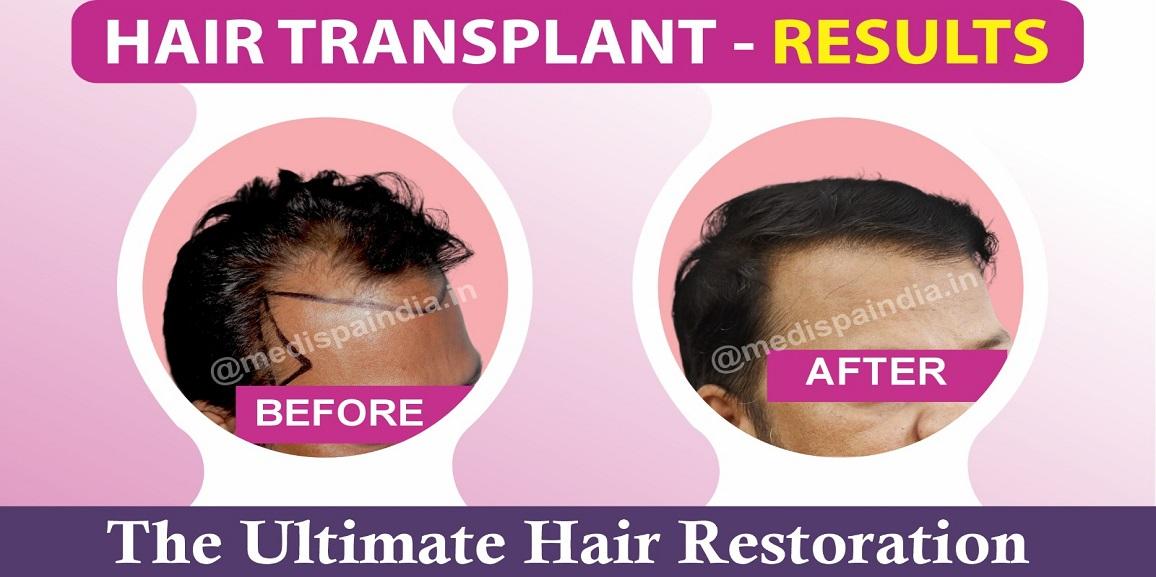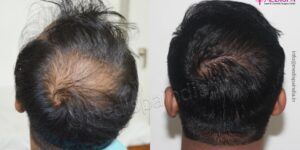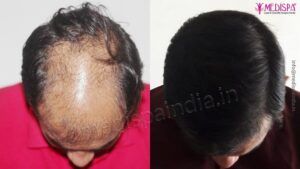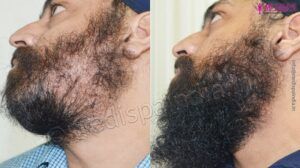
Hair restoration represents an advanced form of cosmetic surgery that can significantly improve one’s appearance. Recent scientific advancements have made it feasible to recover lost hair through cutting-edge techniques. This process involves extracting hair follicles from regions of the body that possess adequate hair density and permanent roots, followed by their transplantation to areas experiencing hair loss, resulting in natural-looking outcomes. The effectiveness of this procedure is largely dependent on the surgeon’s artistic talent, alongside their surgical proficiency.
Hair transplant in Jaipur has gained international recognition for their outstanding results. Dr. Suneet Soni, a highly regarded surgeon in Jaipur, is celebrated for his artistic methodology and remarkable surgical skills. Additionally, the competitive hair transplant cost in Jaipur attracts numerous international patients seeking these treatments. For those in pursuit of superior quality, Medispa hair transplant clinic is recognized as the leading destination in India for an exceptional hair transplant experience.
What about successful hair transplant?
A successful hair transplant is defined by the emergence of healthy hair that appears natural. The essential factor for a successful hair transplant is to attain a natural and harmonious look following the procedure. Observing the growth of hair in areas that were once bald can significantly enhance one’s confidence and self-esteem. The primary objective of a hair transplant is to guarantee that the end result is indistinguishable from natural hair.
Possible treatment solution for pattern baldness
Should you be facing the issue of pattern baldness, you might wish to consider various treatment options available. It would be beneficial to compile relevant information to assist you in assessing your choices.
- Hairpieces or artificial hair: Historically, in the absence of effective remedies for baldness, individuals often turned to hairpieces or patches as a short-term fix. Nevertheless, these solutions may not yield a natural appearance. They necessitate routine maintenance and may need to be replaced every few months or annually, depending on their quality.
- 2. Medications: Minoxidil and finasteride are two pharmaceutical options available for the treatment of hair loss. These drugs function by inhibiting the rate of hair loss and encouraging new hair growth, which may help mitigate the advancement of baldness. Nevertheless, the outcomes associated with these treatments can vary significantly, and prolonged use may not be recommended due to possible adverse effects. Ceasing the use of these medications may also result in a reversal of any hair regrowth achieved.
- PRP therapy: This treatment is mainly advised for those experiencing the initial stages of hair loss. The objective of this therapy is to enhance hair growth through the injection of platelet-rich plasma into the targeted areas. The process of preparing PRP utilizes the patient’s own blood, rendering it a straightforward and economical option. Consequently, PRP therapy has become increasingly popular in recent years. However, it is crucial to understand that, despite its potential benefits, this procedure should not be viewed as a replacement for hair transplant surgery.
- Hair transplant: We will now examine the most effective and conclusive remedy for hair loss: hair transplant surgery. This procedure provides a lasting solution to your hair loss issues. Hair grafts are extracted from a donor site, which is meticulously chosen based on the availability of permanent hair follicles. These follicles are subsequently implanted into the targeted bald regions. The outcomes of hair transplant surgery are remarkably reliable, enabling you to attain optimal hair growth with results that appear entirely natural.
Hair transplant procedure: How it is performed?
Hair transplant is an advanced cosmetic surgical procedure that involves the extraction of hair follicles from a donor site and their subsequent implantation in areas affected by baldness. The follicles used for transplantation are typically sourced from the back and sides of the scalp, as these regions contain hair roots that are more likely to remain permanent. In cases where the hair density in these areas is inadequate, alternative donor sites such as the chest or beard may be considered. The surgery can be conducted using two primary techniques: Follicular Unit Transplantation (FUT) and Follicular Unit Extraction (FUE). With modern methodologies, it is often possible to achieve the desired outcomes in a single session; however, some patients may require multiple sessions based on their specific needs as determined by their physician. The duration of the procedure generally ranges from 4 to 9 hours, depending on the surgeon’s expertise and the chosen technique, as well as the required hair density.
Hair transplant techniques
Your doctor may suggest either the FUT (Follicular Unit Transplantation) or strip method, or the FUE (Follicular Unit Extraction) hair transplant for the purpose of hair restoration. In the FUT method, a strip measuring 1-2 centimeters is surgically excised from the back and sides of the scalp. This area is then sutured and concealed by the existing hair. The surgical team subsequently divides the strip to harvest individual hair grafts. Conversely, the FUE hair transplant employs a punch device to extract hair grafts individually from the donor site. The donor area heals with small circular scars that are masked by the surrounding hair growth. After the hair grafts are collected, the subsequent steps for both techniques are alike. Slits are created in the balding area, into which the hair grafts are carefully implanted. The FUT technique can yield approximately 3000-3500 hair grafts, whereas the FUE technique can provide around 2000-2500 hair grafts. The FUT method is generally recommended for cases of significant hair loss or when a high-density hair transplant is sought. In contrast, the FUE technique is more frequently utilized for facial hair transplants or for addressing early stages of hair loss.
Hair transplant cost
The cost of a hair transplant procedure is primarily influenced by the quantity of hair follicles relocated from the donor site to the recipient area. Prices typically vary between 60,000 to 400,000, contingent upon the clinic and location. It is essential to recognize that the expense associated with hair transplants is relatively reasonable when taking into account the enduring results they offer. While exploring cost-effective alternatives is recommended, one should exercise caution regarding lower-priced services that may not deliver satisfactory outcomes.







